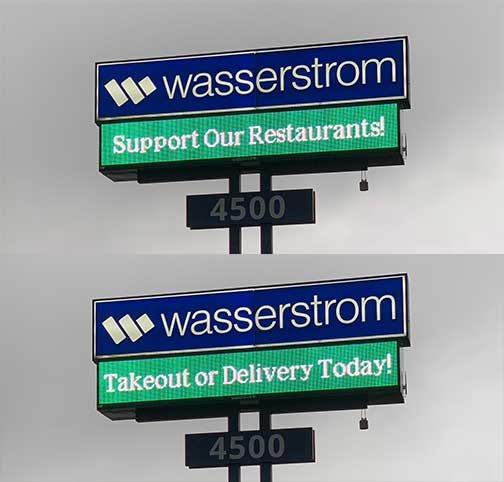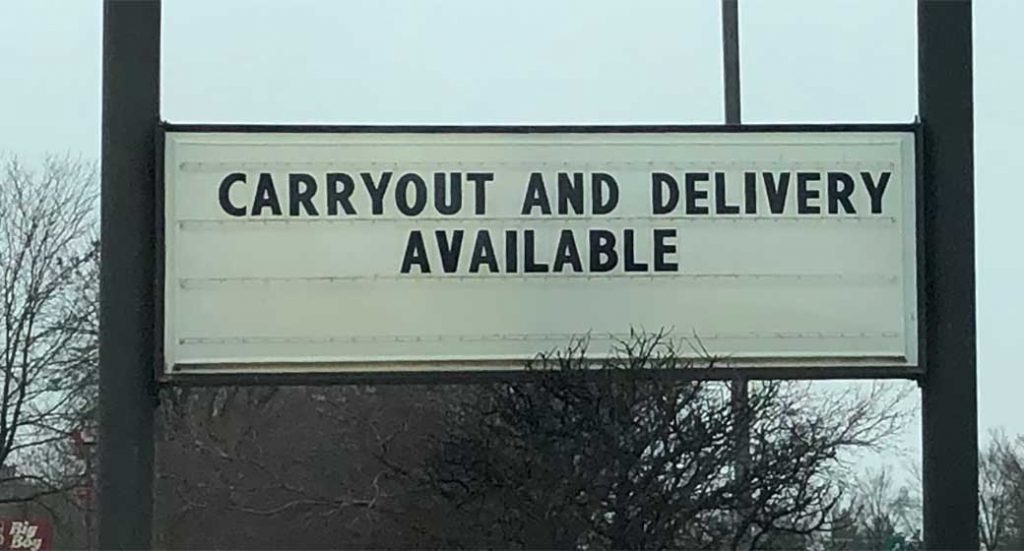Restaurants need your help right now more than ever. But how you choose to help matters. There are lots of people giving advice right now. Some of it is good. Some of it is flat out wrong. We hope to sort things out a bit and give you a practical guide to helping your favorite restaurants during this unprecedented quarantine.
Watch Your Language
One of the issues that we have observed early on is that many media outlets are referring to the current situation as “restaurant closures.” While it is true that many restaurants have had to go into hibernation mode or close altogether, many others are still open for delivery and carryout.
The preferred terminology is “dining restrictions” or “restaurant restrictions.” When talking about the new rules for restaurants, please don’t say that restaurants are closed. It is acceptable to say that dining rooms are closed, but then be sure to point out that delivery and carryout are available if appropriate.
The words we use to talk about this crisis are important. They shape public perception. So, please practice using the words “restaurant restrictions” instead of “restaurant closures.”
Order Takeout & Delivery
This may seem so obvious that it need not be mentioned, but we still need to say it. Restaurants are dependent on takeout and delivery for their survival during this time.
But keep in mind that social distancing should still be observed whenever possible. Fortunately, many companies are already trying to address this aspect of service. Many delivery services are now offering “contactless delivery” as an option. That simply means that your order will be left outside and you may pick it up once the delivery driver has left.
Burger King has implemented new procedures to allow for reduced contact at its drive-thrus. Handling money is actually one of the dirtiest things we do regularly. So payment cards are probably best for both parties. You can use sanitizing wipes on your debit or credit card without interfering with its chip or magnetic stripe. So wipe those cards down frequently, especially after being handled by someone else.
if you are coming to our drive thru, try ordering ahead on the BK app for a minimized contact experience. pic.twitter.com/CGcRAvxMcT
— Burger King (@BurgerKing) March 19, 2020
Is It Safe to Order Takeout?
In a recent article for The Atlantic, author Amanda Mull interviewed a wide variety of health professionals to discuss the potential issues with ordering takeout during these times. The basic message is that cooked foods, properly handled, are unlikely to pose much risk. The coronavirus is not believed to be transmitted through the digestive tract. But even with cooked foods, customers should still use common sense.
“When it comes to ordering in, the food itself is unlikely to be much of a danger, according to Stephen Morse, an epidemiologist at Columbia University. Even if the person preparing it is sick, … ‘cooked foods are unlikely to be a concern unless they get contaminated after cooking.’ He granted that ‘a salad, if someone sneezes on it, might possibly be some risk,’ but as long as the food is handled properly, he said, ‘there should be very little risk.'”
Not All Delivery is the Same
We do want to note that third-party delivery services such as Uber Eats and GrubHub have put out some offers recently, designed to help restaurants using their platforms during this crisis.
However, the GrubHub offer to defer fees for restaurants has drawn some criticism.
UberEats is offering to waive its signup fee for restaurants wishing to join their service. For some establishments, this might be their best and only choice in this situation. If a business wasn’t doing delivery before this crisis, setting it up now could be difficult. There are a number of risks and challenges involved in food delivery. Not the least of these is the potential insurance consequence. And at a time when restaurants are trying to save money, this might be a non-starter.
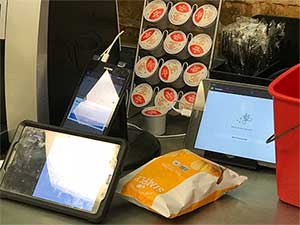
It’s clear that third-party delivery services have their place in the foodservice industry and are probably here to stay. But please bear in mind that these services also cost the restaurants for every order. Commissions can be as much as 30% per order. If your favorite local restaurant has its own delivery service (i.e., they employ drivers directly), they may also participate in one or more third-party delivery services to expand their reach and visibility with customers.
First-Party Delivery & Takeout Help the Most
If the restaurant you want to order from does have its own delivery service, this is often better for the restaurants financially.
In some cases, it’s basically a toss-up. But if the owner is paying a delivery driver, it’s definitely better if they are actually working delivering orders.
Ultimately, it’s probably best for the business if you do takeout and pay with actual cash. That saves the credit card transaction fee and bypasses all the potential pitfalls and expenses with delivery. Restaurants need cashflow at this critical time. Patronizing them does help.
Takeout is Great – Maybe Skip the Kiosk
Larger chains may have apps that allow you to order in advance and maintain good social distancing protocols when you pick up your order. Just make sure to sanitize your phone often.
If you do need to order in a physical restaurant, you might be tempted to use a kiosk for ordering to avoid human contact. DON’T. Do not use the kiosk. Most chains that use them have them shut off for now. Why? Because kiosks have been repeatedly shown to be filthy disease vectors.
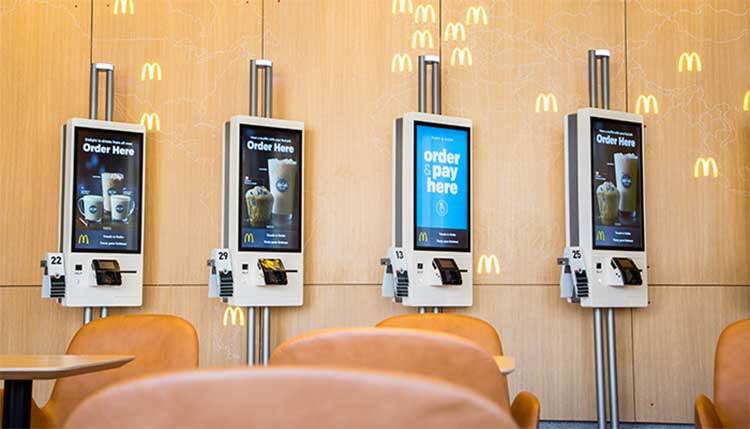
So, you will need to order from a human. Just be sure to stay back and if there is a line, provide at least 6 feet of spacing between you and the customer in front of you. Some stores are putting tape markers down to help people better judge the safe distance between customers.
Some retailers and other businesses have begun using plexiglass barriers between their cashiers and their customers. Because this virus is spread primarily through “respiratory droplets,” a physical barrier may be helpful in reducing exposure.
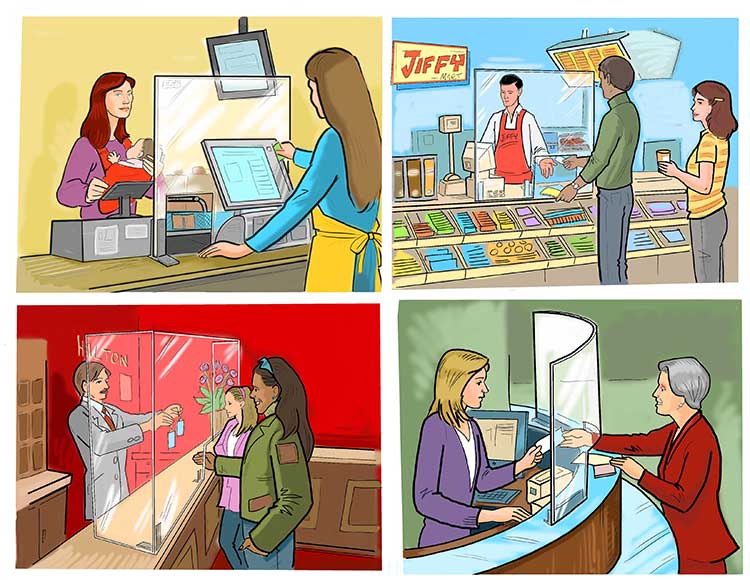
Gift Cards & Gift Certificates – Maybe
One of the suggestions we have seen most often on how to support restaurants sounds like one of the simplest: Buy gift cards and gift certificates.
But the reality of the situation is much more complex.
If you are buying a gift card from a national chain, you are most likely not helping your local operator. The funds used to purchase gift cards from large chains are typically held by the corporate entity (or a third-party service if they outsource it). The card can be redeemed at any location, not just the location where it was purchased. So the funds are held and then distributed to the operator of the location where the card is redeemed.
Gift Certificates Might Be Better
If your local favorite is an independent operator (i.e., not part of a chain) offers gift certificates, then you might actually be helping. Again, it depends on whether the operator is doing the gift certificate program themselves or whether they are using a third-party. If the gift certificate is hand-written by your server, you can be pretty sure the establishment is doing it themselves.

So how does this type of gift certificate help? You are giving the operator cash now for goods and/or services to be “purchased” at a later time. While public companies may have specific GAAP rules about revenue recognition for gift cards, they still have the cash that can be used for operations, knowing that there is an outstanding financial obligation for the value of the gift card.
For the independent operator, having the cash now without having to exchange goods is especially helpful during this time. Granted, it is a little bit of a risk for the buyer. If the restaurant goes out of business before the gift certificate is redeemed, the buyer is probably out of luck and out of their money.
Donate
If you are in a position to do so, you could simply donate to your favorite restaurant. Some establishments have set up crowdfunding campaigns to help defray the costs for their laid off or under-employed employees. These are difficult, challenging times and businesses are doing everything they can to make ends meet.
But it’s probably not realistic to think that we can support each restaurant that needs assistance on a house-to-house basis. But there are programs springing up to provide aggregate support for local businesses.
The Cbus Together Campaign
In our hometown of Columbus, Ohio, several of the city’s prominent leaders in the local restaurant industry have stepped up to create a campaign designed to help the struggling workforce and the industries they serve. The “We Are All In This Together” campaign recently launched via crowdfunding to provide some relief in aggregate. Check your local area of similar projects.
And even if you don’t have a program like this available in your area, there are any number of existing charities that will end up supporting displaced workers from the foodservice industry. So supporting charities like your local food bank is even more important during this time.
#TipForTakeout
We talked about the #TipForTakeout campaign in our recent article. The basic idea is that, during this time, we should tip for our takeout orders to help offset the losses incurred by restaurant staff, many of whom are typically tipped employees.
Tips on takeout orders are typically pooled among all the workers at the restaurant so you can help many people with a single gesture.
And even if you order delivery, a generous tip for your delivery driver can mean more than you may know. It could mean the difference between paying the electric bill or covering rent. Food deliveries are expected to rise sharply during this event. Please take care of your delivery drivers too!
Share the hashtag #TipForTakeout and post a photo of yourself getting carryout at your favorite local restaurant!
Distance Socially, Eat Locally
The restaurant industry employs millions of workers nationwide. Add in all the hotel, hospitality, and related industries and you can see that this crisis is affecting tens of millions of workers.
This is an industry that must survive. By some estimates, restaurants supply as much as 40% of the food consumed in some areas.
So, please help where you can. Keep yourself and our foodservice workers safe by practicing good social distancing and other hygiene recommendations, intended on reducing the spread of COVID-19. Together, we can make it through this difficult time.
